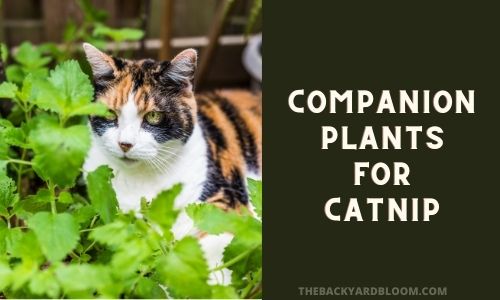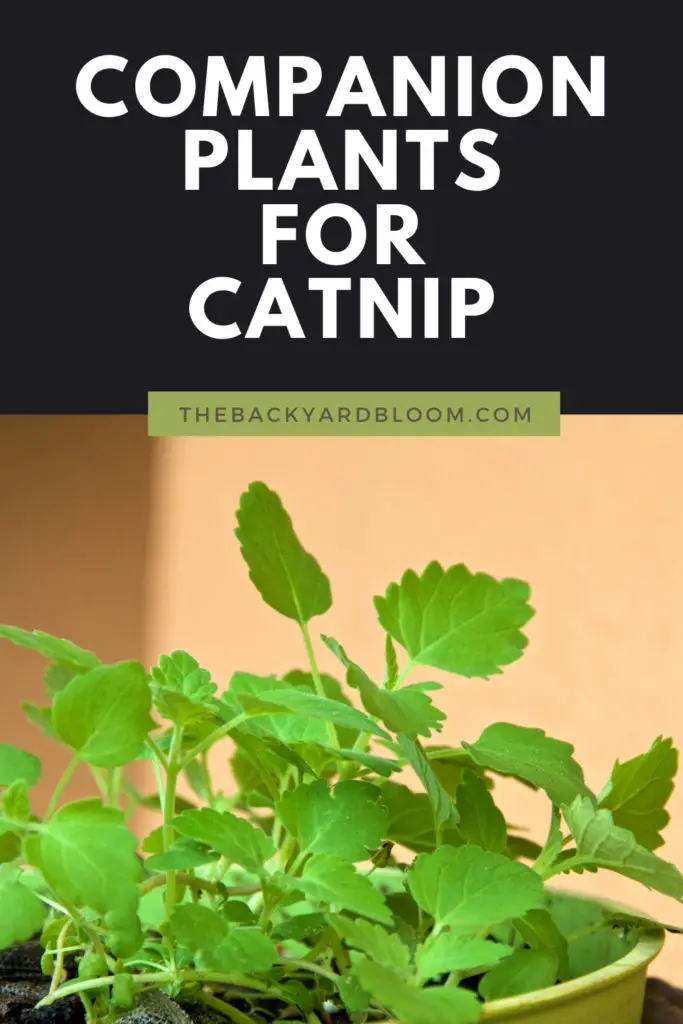Please note that this post may contain affiliate links. You can read my full affiliate disclosure at the bottom of the page.
Growing catnip has more uses in the garden than just being a favorite herb of your cat. You might wonder what can you plant with catnip and what can you not plant with catnip if you have picked some up to use in your garden. In this article, we go over the best companion plants for catnip and what catnip can be used for in a home vegetable garden.
How To Use Catnip As A Companion Plant
Catnip can be used as a companion plant in the garden to help keep away unwanted insects and other pests. It also helps attract honey bees and other pollinators to the garden. The oils that the catnip plant contains are what keeps bugs away, they do not like it at all. By using catnip as a companion plant you can avoid using harsh chemicals as a way to keep harmful insects and pests out of your home garden.
Catnip can be a very invasive herb. So when using catnip as a companion plant it is best to plant your catnip in a container. You can then either sit the container of catnip near your crops that you are using it as a companion plant for or you can plant the container in the ground.
Make sure where you place your catnip is an area that has some room around it. And don’t plant it right next to your vegetables or other companion crops. Just like the catnip you buy in a jar, cats will love this plant even when it’s growing in your garden. You will often find cats rolling around your catnip in the garden, so make sure they have room to do this without crushing your garden crops.
What Bugs and Pests Does Catnip Keep Away?
- Aphids
- Ants
- Cabbage Looper
- Cockroaches
- Colorado Potato Beetle
- Flea Beetles
- Japanese Beetles
- Mice
- Slugs
- Squash Bugs
- Voles
- Weevils

Good Companion Plants For Catnip
- Beans
- Beets
- Broccoli
- Brussels Sprouts
- Cabbage
- Carrots
- Cauliflower
- Collard Greens
- Cucumbers
- Eggplant
- Hyssop
- Lettuce
- Potatoes
- Pumpkin
- Radishes
- Squash
- Strawberries
- Tomatoes
- Turnips
- Winter Squash
- Zucchini
Beans can benefit from catnip’s ability to repel Japanese Beetles. I always make sure to keep catnip near my pole beans. This way there’s room on the ground for the cats to have fun with the catnip and the beans can grow without a ton of beetles trying to feast on it on the trellis. When growing bush beans you can make a border of potted catnip to help keep the beetles away.
Companion Plants for Green Beans
Beets commonly suffer from flea beetles, so a border of catnip can help keep this pest away.
Brussels Sprouts, Collard Greens, Cauliflower, Broccoli, Turnips, Kale, and other members of the Brassica family benefit from catnip as a companion plant since it helps keep away flea beetles.
Carrots also benefit from catnip as a companion plant due to it helping keep flea beetles away.
Companion Plants for Carrots
Lettuce benefits from catnip because catnip helps repel slugs as well as beetles. Find out what else to plant with lettuce here.
Radishes are also technically a member of the Brassica family and they attract flea beetles. So this garden crop also benefits from using catnip as a companion plant. Find other companion plants for radishes here.
Strawberries can benefit from the insect repelling abilities of catnip.
Companion Plants for Strawberries
Tomatoes gain the benefit from catnip’s ability to attract pollinators like honey bees and butterflies.
Squash, Pumpkins, Winter Squash, and Zucchini benefit from companion planting with catnip due to catnip’s ability to repel squash bugs.
Companion Plants for Zucchini
What Not To Plant With Catnip
Parsley does not grow well with mint, and catnip is a mint plant.
Besides parsley there really isn’t much that would not grow well with catnip in a garden.


